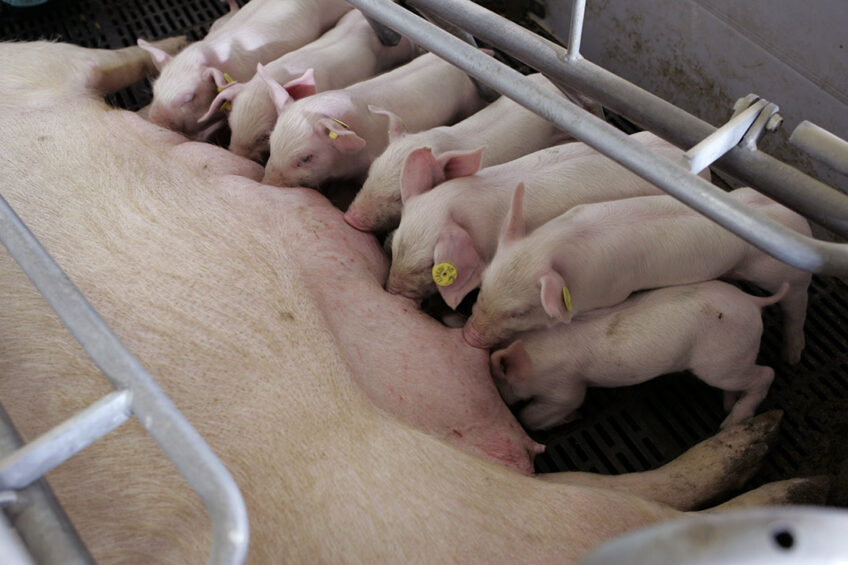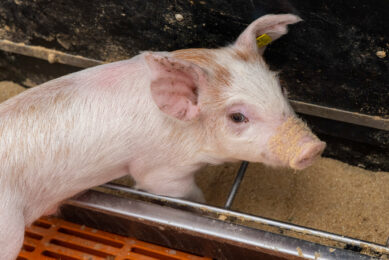Is crushing attributed to sows, piglets or housing?

Researchers from Aarhus University, Denmark have evaluated sow and piglet behaviour preceding and following fatal incidences of crushing. They wanted to know whether crushing events are attributed to sow behaviour, piglet vitality or inappropriate housing conditions.
Pre-weaning piglet mortality is a major concern in swine production systems. Approximately 83% of piglet mortality is due to crushing events. The major risk factors are the sow’s maternal behaviour, the individual piglet, and housing conditions. Maternal behaviour includes colostrum and milk production, litter size, health, and body condition. Piglet related factors comprise low birth weight, intra-uterine growth retardation, low body temperature, and a lack of colostrum intake. Housing condition risks consist of environmental temperature, space allowance, and structures to slow down sow movements when lying down.
Data collection
The researchers identified fatal crushing events during the first 3 days after the start of farrowing in 32 litters. They continuously monitored sow and piglet behaviour with 1 video camera per pen. The research team recorded the exact time of each fatal crushing event, the sow’s posture change that caused it, and the number of piglets in the area where the sow had previously been lying down (nest) and in the area where she was about to lie down (danger zone).
The researchers also determined the number of non-fatally squeezed piglets and those that were fatally crushed in each event. In addition to this, they monitored the sow’s posture change, how long it took her to lie down, the number of piglets in the nest and in the danger zone and their position, and the sow and piglet state. This state included whether or not the sow explored before crushing or made a posture change afterwards. The researchers also checked whether the piglets had damage or were weak prior to the crushing event, or whether the sow was giving birth during the event.
Sow posture changes
The sow’s posture changes that contribute most to fatal crushing include rolling, followed by standing to sternal, standing to lateral, sitting to sternal, stepping on a piglet, minor movements, sternal to standing, and lateral to standing. The posture change from standing to sternal occurred more quickly than the posture change from standing to lateral. This meant that piglets had less time to move away, indicating that lying down more slowly is beneficial for the survival of less viable piglets.
After the fatal crushing, piglets were visibly alive and breathing but unviable for up to 10 hours. Although this is a significant welfare and ethical issue, it leaves the option that piglets may survive if the sow is alarmed and reacts.
Rolling is an essential posture change for suckling and gradual weaning process. The researchers do therefore not recommend reducing or preventing rolling
Rolling is dangerous, yet essential
Rolling is a dangerous posture change which leaves limited opportunity for the sow to be attentive to the presence of piglets when rolling from sternal to lateral since she cannot see or explore in that direction. However, rolling is an essential posture change for suckling and gradual weaning process. The researchers do therefore not recommend reducing or preventing rolling. They suggest decreasing the number of piglets lying near the sow or to make the posture change slow, so piglets have time to move away.
Flopping: truly risky
Flopping is a truly risky behaviour. Attempts to attract the piglets away from the nest site might mitigate the risk of crushing during flopping events. The sow mostly explored before the fatal posture change when moving from standing to lying or when stepping on a piglet. However, to what extent stepping on piglets occurs may relate to housing design.
Piglet position
Because of the residue warmth from the sow, piglets clustered more often in the location where the sow most recently had been lying. It is important to attract piglets to the creep area and away from the nest site or the danger zone. The bedding the sow used to build a nest or the warmth from a heat lamp may attract more piglets and mitigate crushing events.
Genetic selection and housing conditions
In general, strategies including genetic selection for more attentive maternal behaviour and more robust and vital piglets, and housing conditions to slow sow posture changes and to attract piglets away from the danger zone may reduce piglet crushing events.











